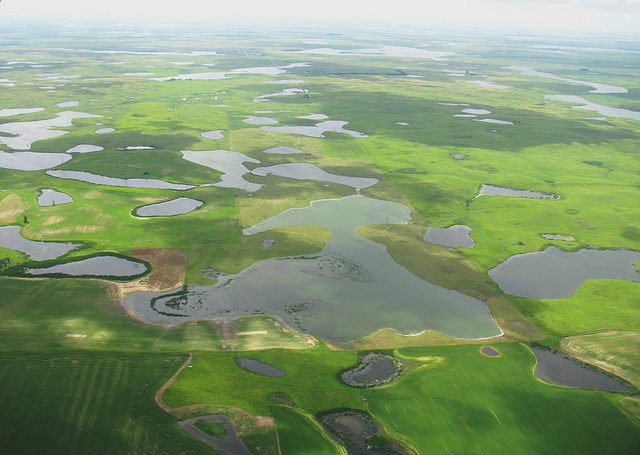March 24, 2021
| President Joseph R. Biden The White House 1600 Pennsylvania Avenue NW Washington, DC 20500 |
Vice President Kamala D. Harris The White House 1600 Pennsylvania Avenue NW Washington, DC 20500 |
Dear President Biden and Vice President Harris:
We the undersigned are writing in response to your January 27th Executive Order on Tackling the Climate Crisis at Home and Abroad (herein “the EO”). As conservationists for climate solutions, our coalition represents organizations – 32 of which have joined this letter – aligned to advance comprehensive climate strategies through bipartisan policy and legislative solutions. We appreciate your new administration’s science-based approach to carbon mitigation, climate adaptation, resilience, and interest in working with our community to identify pathways forward for climate solutions to benefit fish and wildlife, the habitats that support them, and the people and communities that depend upon healthy ecosystems.
Our organizations represent millions of hunters, anglers, outdoor enthusiasts, land stewards, scientists, and natural resource professionals who together comprise the centerpiece of a powerful economic engine and have helped to place the United States as the world leader in conservation. Sportsmen and women, landowners and managers, and outdoor enthusiasts are on the front lines of climate change, often witnessing declines in landscape health and resiliency as well as impacts on our nation’s fish and wildlife resources. Shifting climate conditions are leading to more frequent and extreme weather events, high intensity fires, expansion of invasive species, and prolonged drought. We are witnessing changes in fish and wildlife migration patterns, altered breeding seasons, loss of habitat, and even loss of trail and road access due to extreme weather events such as flooding. These changes fundamentally affect our outdoor heritage and the annual $200 billion hunting and fishing economy and $788 billion outdoor recreation economy.
In July 2020, we released the Sportsmen & Sportswomen Climate Statement detailing key areas of focus where our community has expertise in advancing nature-based climate solutions. We also urged Congress to pass meaningful bipartisan legislation to address the impacts of climate change. While our community recognizes that any comprehensive national strategy to address climate change must include reductions in greenhouse gas emissions, we also believe this strategy will need to include land and water-based solutions that harness the power of our natural systems. In the months ahead, our coalition will be working to develop comprehensive policy and legislative recommendations that deliver land- and water-based climate solutions and economic growth. Our recommendations focus on protection, restoration, and management in the following main areas: Agriculture; Forests, Rangelands, and Grasslands; Oceans; Rivers, Lakes, and Streams; Wetlands; Coastal Resilience; and Adaptation.
There is broad overlap between our work and the EO and we look forward to working closely with National Climate Advisor Gina McCarthy and her team, the Council on Environmental Quality, the Office of Management and Budget, and departmental and agency-based climate liaisons to advance shared interests in these key issue areas. The EO presents several opportunities for our coalition to engage with and provide input to the newly formed National Climate Task Force and federal departments and agencies charged with specific tasks. Some immediate opportunities for engagement are highlighted below.
USE OF THE FEDERAL GOVERNMENT’S BUYING POWER AND REAL PROPERTY AND ASSET MANAGEMENT
The emphasis on aligning the management of public lands and waters to support robust action on climate change while also protecting our natural resources, preparing adaptation strategies, restoring degraded habitats, and creating jobs is particularly important to us. Federal policy can help by connecting climate adaptation efforts with existing conservation programs and investing in new policies, programs, and projects that leverage nature-based solutions to sequester carbon and build climate resilience.
More specifically, as the administration moves forward with policies that shape the leasing and subsequent development of domestic energy resources, both conventional and renewable, we encourage you to strike the appropriate balance to protect critical fish and wildlife habitats and important scenic and recreation areas. Integrating science on fish and wildlife habitat use including migration corridors will help inform the development and implementation of these policies. Also, rethinking operations at federal facilities, including Bureau of Reclamation and US Army Corps of Engineers dams, for example, can improve habitat as well as watersheds’ drought and flood resilience.
EMPOWERING WORKERS THROUGH: REBUILDING OUR INFRASTRUCTURE; ADVANCING CONSERVATION, AGRICULTURE AND RESTORATION; AND REVITALIZING ENERGY COMMUNITIES
With an effective land- and water-based strategy that leverages market and incentive-based approaches, the U.S. could mitigate a third of its carbon emissions through natural solutions alone. This is equivalent to removing emissions from all cars and trucks on U.S. roads today and would stabilize warming to below 2 °C. Moreover, these actions will: strengthen rural communities and their economies; benefit fish and wildlife; improve air quality, soil health, water quality and quantity; strengthen the outdoor recreation economy; and create more resiliency for fish and wildlife, land stewards, and communities facing the impacts of a changing climate.
We encourage the administration to work with Congress to: implement existing and increase future conservation funding in the Farm Bill; improve the resilience of our nation’s transportation infrastructure and our forests, grasslands, rangelands, and wetlands; invest in pre-disaster mitigation; and support strong funding for the full complement of federal conservation programs, including those that restore degraded landscapes and watersheds. We also encourage the Task Force to identify opportunities through upcoming economic recovery and infrastructure legislation to advance new authorities and funding streams for natural infrastructure and nature-based solutions. These investments can help our nation recover from the economic impacts of the pandemic, while also spurring conservation.
Finally, the Executive Order details a process for developing recommendations around achieving the goal of conserving at least 30 percent of the nation’s lands and waters by 2030. The success of this 30×30 goal will depend upon hunters, anglers, outdoor recreationists, private landowners, scientists, states, tribes, and other stakeholders having a seat at the table, and working collectively to advance conservation objectives for the nation’s public and private lands and freshwater and marine resources.
SECURING ENVIRONMENTAL JUSTICE AND SPURRING ECONOMIC OPPORTUNITY
Tremendous opportunities exist to advance natural infrastructure solutions that also provide multiple co-benefits to local communities. Regions in the U.S. currently predicted to have the greatest climate impacts are also identified as disadvantaged communities. For these communities, located both in rural and urban areas, federal investment in natural solutions that combat climate change will also foster environmental and economic restoration. Additionally, landscape- and community-appropriate strategies will allow people to shape solutions in the places where they live that achieve multiple benefits: a wetlands restoration project that provides natural flood protection for the adjacent local community could open new fishing and boating access or a coastal resilience project can become a living classroom for area students and provides an infusion of new, well-paying jobs for an economically depressed community.
Amid the nation’s converging crises, addressing our natural resources and outdoor recreation infrastructure is of particular relevance as so many Americans seek renewal and reconnection on public lands and waters. We have attached a more detailed statement on the land- and water-based actions needed to address climate change. We offer the administration our time, expertise, and partnership with our businesses, members, and partners in communities across the country to develop, perfect, and implement these policies.
Sincerely,
American Fisheries Society
American Sportfishing Association
American Woodcock Society
Archery Trade Association
Backcountry Hunters & Anglers
Bonefish & Tarpon Trust
California Waterfowl
Captains for Clean Water
Fly Fishers International
Guy Harvey Ocean Foundation
Izaak Walton League of America
Land Trust Alliance
National Deer Association
National Wildlife Federation
National Wildlife Refuge Association
National Wild Turkey Federation
North American Falconers Association
North American Grouse Partnership
Orion: The Hunter’s Institute
Outdoor Industry Association
Pheasants Forever
Quail Forever
Ruffed Grouse Society
Student Conservation Association
Theodore Roosevelt Conservation Partnership
The Conservation Fund
The Trust for Public Land
The Wildlife Society
Trout Unlimited
Wildlife Management Institute
Wildlife Mississippi
Wild Salmon Center
cc: Gina McCarthy, National Climate Advisor, Office of Domestic Climate Policy

